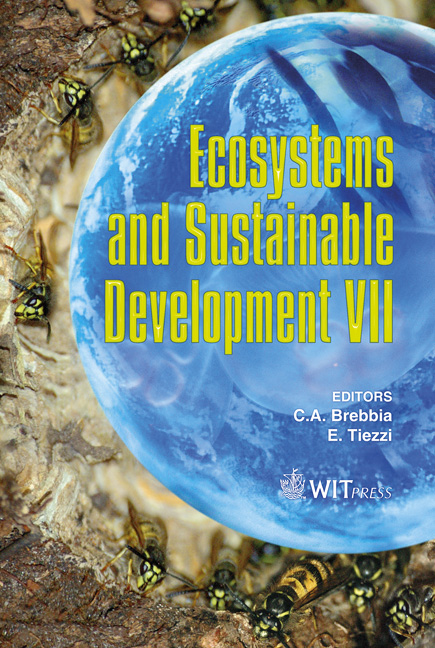Mathematical Models To Estimate Leaf Area In Plants Of Wheat
Price
Free (open access)
Transaction
Volume
122
Pages
5
Page Range
97 - 101
Published
2009
Size
230 kb
Paper DOI
10.2495/ECO090101
Copyright
WIT Press
Author(s)
P. Sastre-Vázquez, Y. Villacampa, J. A. Reyes, F. García-Alonso & F.Verdu
Abstract
P. Sastre-Vázquez1, Y. Villacampa2, J. A. Reyes2, F. García-Alonso2 & F.Verdu2 1Área de Matemáticas, Facultad de Agronomía de Azul-UNCPBA, Argentina 2Dpto. Matemática Aplicada, Universidad de Alicante, Spain Abstract Foliar area and light penetration are two variables that have a major impact on production. The former gives an idea of the potential photosynthetic capacity of the plant, while the latter indicates the amount of light received by its different strata. In 1952, Watson introduced the Leaf Area Index (LAI) concept, which is defined as the sum of the surface area of photosynthetically active tissues (leaves, stems) present per land surface unit. On this basis, numerous researchers have underlined the close relationship between the LAI and crop yield. Great efforts have also been made to try and simplify the measurement of this parameter. The methods used up to now to obtain leaf area data involve: planimetry and the use of photoplanimeters. However, both methods have their drawbacks. The former, as well as being destructive, requires significant instrumentation, staff and time. The latter, given the high cost of photoplanimeters, is not always affordable by researchers. The aim of this study was to find a non-destructive, affordable methodology for estimating the leaf area of wheat plants. To this end, we gathered leaves of different sizes from wheat plants at different stages of growth and measured their length, maximum width and surface area. Regression curves were obtained by using length and width as independent variables, and leaf area depended on this. The equations obtained allowed us to construct a rule whereby measurement of leaf length was replaced by the surface area of the leaf being calculated. This rule allows us to estimate leaf area with sufficient precision, with an acceptable improvement in working speed and without destroying the material being measured. The models obtained are valid but in some cases can only be applied for leaves measuring more than 7 cm in length. For this reason, we have also obtained families of nonlinear models that are valid for all sizes of leaf. Keywords: wheat, mathematical model, leaf area.
Keywords
wheat, mathematical model, leaf area





